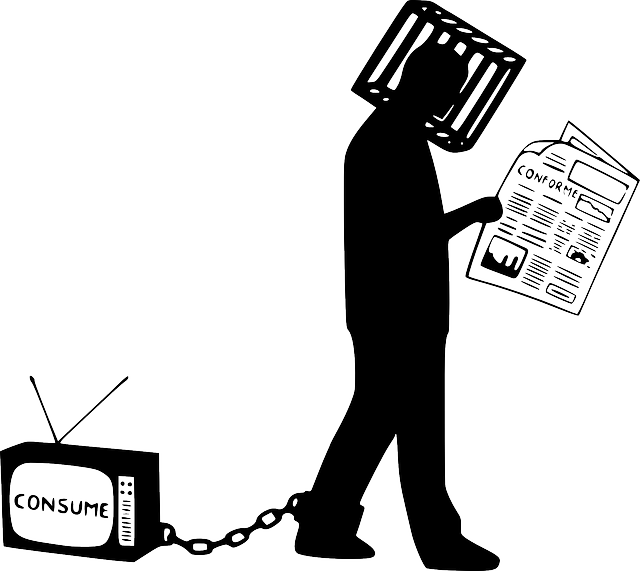Debt restructuring for individuals is a strategic approach to transforming financial burdens into manageable long-term solutions, involving renegotiating debt terms like lower interest rates and extended repayment periods. Key steps include assessing financial situations, identifying all debts, understanding the implications of each option, and seeking expert advice for tailored insights. It's recommended to explore restructuring when debts exceed repayment capabilities. Strategies like debt consolidation, negotiation, or bankruptcy offer relief, each with advantages and disadvantages. Open communication with creditors, creating a detailed repayment plan, and listening to feedback are crucial for success. Post-restructuring, rebuilding financial health involves setting realistic goals, saving for emergencies, eliminating high-interest debts, and consistently saving for retirement. Common mistakes include delaying the process, lack of understanding, ignoring mounting debts, and DIY approaches without professional guidance.
Struggling with debt? Debt restructuring could be the solution you need. This comprehensive guide provides expert advice and guidance tailored for individuals seeking to regain financial control. We’ll walk you through understanding debt restructuring, assessing your unique financial situation, exploring available options, communicating effectively with creditors, and building a sustainable post-restructuring plan. Learn from common mistakes and take charge of your financial future today.
- Understanding Debt Restructuring: A Comprehensive Guide
- Assessing Your Financial Situation and Eligibility
- Types of Debt Restructuring Options Available for Individuals
- Strategies for Effective Communication with Creditors
- Building a Sustainable Financial Plan Post-Restructuring
- Common Mistakes to Avoid During the Debt Restructuring Process
Understanding Debt Restructuring: A Comprehensive Guide

Debt restructuring for individuals is a strategic process aimed at transforming their financial burdens into manageable, long-term solutions. It involves reworking existing debt terms and conditions to better align with an individual’s financial capabilities and goals. This could mean negotiating with creditors for lower interest rates, extending repayment periods, or even consolidating multiple debts into a single, more affordable loan.
A comprehensive guide to debt restructuring begins with assessing one’s current financial situation, identifying all sources of debt, and understanding the implications of each restructuring option. It requires careful consideration of factors like credit score impact, potential savings from lower interest rates, and long-term financial stability. Expert advice is invaluable in this process, as it provides insights tailored to individual circumstances, ensuring a more successful debt management strategy.
Assessing Your Financial Situation and Eligibility

Assessing your financial situation is a crucial step in understanding if debt restructuring is the right choice for you. As an individual grappling with debt, it’s essential to gain clarity on your overall financial health and determine which types of debts you’re dealing with. This process involves gathering all your financial information, including income, expenses, assets, and existing debts. By doing so, you can identify areas where adjustments might be possible and develop a realistic budget.
Eligible candidates for debt restructuring typically have substantial unsecured debts or a mix of secured and unsecured obligations. Unsecured debts, like credit card balances or personal loans, don’t require collateral, while secured debts, such as mortgages or car loans, are backed by assets. Experts recommend seeking restructuring options when your debts exceed your ability to repay, leading to consistent late payments or default. In the world of debt restructuring for individuals, understanding these parameters is key to navigating the process effectively and securing a brighter financial future.
Types of Debt Restructuring Options Available for Individuals

When it comes to debt restructuring for individuals, several options are available, each tailored to fit unique financial situations. One popular approach is debt consolidation, which involves combining multiple debts into a single loan with a lower interest rate and more manageable terms. This strategy simplifies repayment by reducing the number of payments needed each month. Another option is debt negotiation, where individuals directly communicate with creditors to reduce the overall balance owed. This method may involve settling for less than the total amount due but requires careful consideration to avoid negative implications on credit scores.
For those with substantial debts, bankruptcy emerges as a last resort. While it can offer a fresh financial start by eliminating certain types of debt, it carries significant consequences, including damage to one’s credit score and potential loss of assets. It’s crucial for individuals facing this decision to consult with legal professionals who specialize in bankruptcy laws to understand the process fully. Each of these debt restructuring methods offers distinct benefits and drawbacks, necessitating a thorough analysis of personal financial circumstances before making any decisions.
Strategies for Effective Communication with Creditors

When dealing with debt restructuring for individuals, open and honest communication with creditors is key. The first step is to gather all relevant financial information and prepare a clear, detailed plan outlining your proposed repayment strategy. This demonstrates to your creditors that you’re committed to resolving the debt and willing to collaborate on a solution.
During discussions, remain calm and professional. Clearly explain your current financial situation and any challenges you’ve faced, focusing on solutions rather than excuses. Be proactive in suggesting possible arrangements, such as extended repayment periods or reduced interest rates, and actively listen to their feedback and counter-proposals. Effective communication fosters understanding and increases the likelihood of reaching a mutually beneficial agreement that paves the way for successful debt restructuring.
Building a Sustainable Financial Plan Post-Restructuring

After successfully navigating the process of debt restructuring, creating a sustainable financial plan is the next crucial step. This involves understanding your financial situation, setting realistic goals, and making informed decisions to rebuild your financial health. It’s essential to assess your income, expenses, and any new repayment agreements you’ve made with creditors. From there, you can start building a budget that balances necessary expenditures with savings goals.
A key aspect of post-restructuring financial planning is creating an emergency fund to buffer against future unexpected expenses. Additionally, prioritizing high-interest debt elimination and consistently saving for retirement are vital components of long-term financial stability. Remember, the goal is not just to get out of debt but to establish a solid financial foundation that supports your overall well-being and ensures you remain debt-free in the future.
Common Mistakes to Avoid During the Debt Restructuring Process

When navigating debt restructuring, individuals often make mistakes that could hinder their progress. A common error is delaying the process, assuming that debts will miraculously disappear or hoping to ignore them. Ignoring mounting debt only makes it harder to restructure later, as interest and fees accumulate. Another mistake is approaching debt restructuring without a clear understanding of one’s financial situation; this can lead to unrealistic expectations and disappointment.
Failing to explore all available options is also detrimental. Some individuals stick to traditional debt elimination methods without considering debt consolidation or settlement, which could offer more feasible repayment terms. Additionally, not involving credible professionals in the process can be risky. Do-it-yourself approaches may lack expertise, potentially resulting in legal issues or missing out on opportunities for better restructuring.
Debt restructuring is a powerful tool for individuals facing overwhelming debt. By understanding your options, assessing your financial situation, and effectively communicating with creditors, you can navigate this process successfully. Building a sustainable financial plan post-restructuring ensures a brighter future, helping you break free from debt’s grasp. Remember, seeking expert advice and avoiding common mistakes are key to achieving a healthier financial landscape. With the right guidance, individuals can take control of their finances and embark on a path towards financial freedom.







